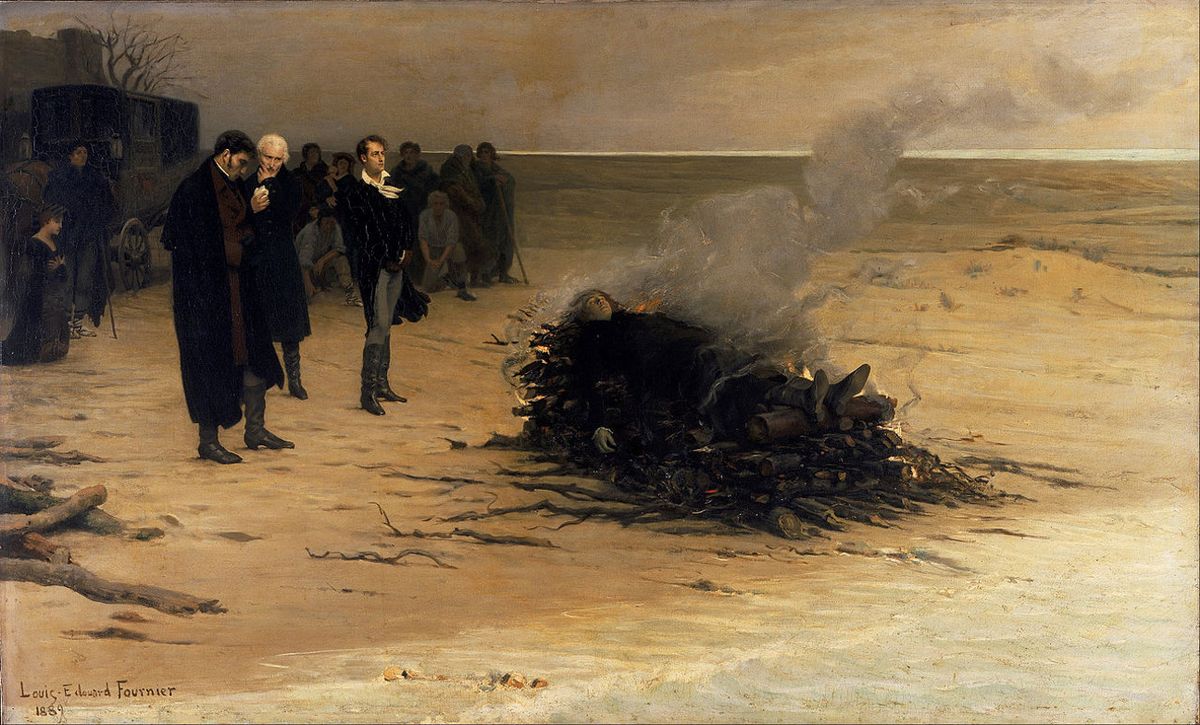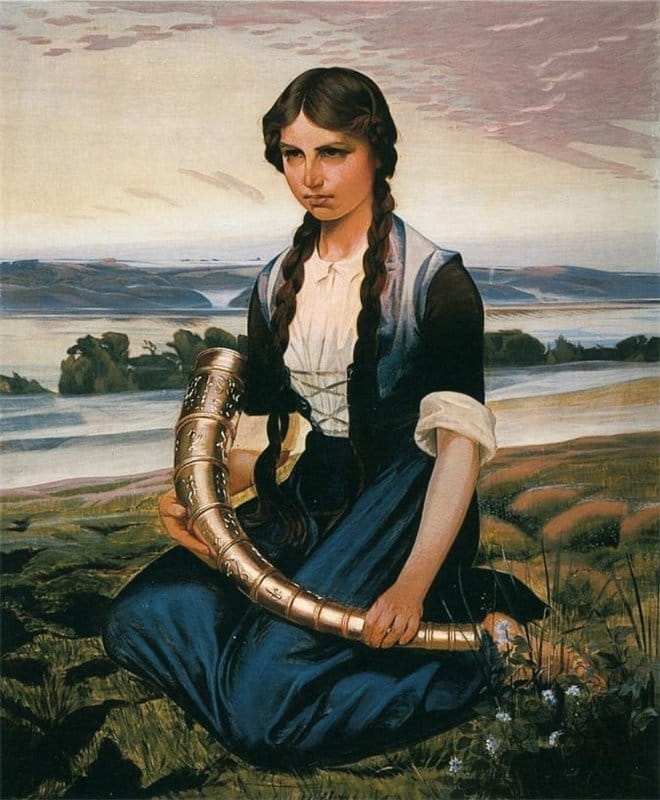Historic Painting: "The Funeral of Shelley" by Louis Édouard Fournier, 1889.
This painting captures the essence of a defining moment in 19th century Romantic literary history.

On July 8, 1822, Percy Bysshe Shelley, the English poet, drowned in a sudden storm in the Gulf of Spezia, in Italy. His body washed ashore, and according to local regulations, the corpse had to be dealt with pretty much immediately. What happened next was an event that fit entirely with the ethos of the Romanticist movement of which Shelley and his literary circle--including Lord Byron--was such a key part. A pile of sticks was built on the beach and Shelley was given something akin to a Viking funeral. Decades later, French painter Louis Édouard Fournier recreated the scene in this, his most famous painting. The result, as you can see above, is very Romantic: haunting and sad, with a kind of epic quality about it.
There's a lot of controversy about Shelley's death. He was aboard a small boat called the Don Juan, accompanied by Edward Williams and Charles Vivien, who also died in the accident. There's some question as to whether the boat was seaworthy, and in any event Shelley wasn't much of a sailor. The death of so high profile a figure, and such a young one--Shelley was only 29--naturally sparked shadowy talk of conspiracies, secret murder etc. Supposedly an Italian fisherman confessed on his deathbed that he'd been paid to ram the Don Juan in a scheme to rob Shelley and his friends. Deathbed confessions are mostly the stuff of fiction, as this story probably is, and was a literary cliché especially popular in the 19th century. What really happened is probably just what it appears to be: the boat sank in a storm and Shelley and friends died accidentally.
Fournier's painting is not entirely accurate. Mary Shelley, Percy's wife and author of Frankenstein, is depicted as attending the funeral, but apparently she was not there. Lord Byron may have been there, or he may have run away, overcome by the horror; supposedly parts of Shelley's body were stripped clean of flesh and was badly decomposed. Shelley's funeral, in a scene based largely on this painting, was recreated in Ken Russell's 1986 film Gothic.
Shelley's writings are bizarre and vivid. I read some of them while researching my doctoral dissertation, which involved perceptions of weather and climate change in the early 19th century, and thus the Frankenstein origin story--closely related to the 1816 climate change known as the "Year Without Summer"--was in my wheelhouse. In his adult life he suffered from numerous serious health problems, had a number of violent delusions, and likely psychological problems probably exacerbated by the frequent deaths of his children.
In any event, though, the epic death of a Romantic poet deserves nothing less than a funeral that looks like a scene from a David Lean picture, and Fournier happily supplied it. This was his most famous commission. Fournier was better known for mosaics, friezes and book illustrations than he was for Romantic-style paintings. He died in 1917.
The Value Proposition
Why should you be reading this blog, or receiving it as a newsletter? This is why.
☕ If you appreciate what I do, buy me a virtual coffee from time-to-time to support my work. I know it seems small, but it truly helps.
📖 You could also buy my newest book.
🎓 Like learning? Find out what courses I’m currently offering at my website.
📽 More the visual type? Here is my YouTube channel with tons of free history videos.



Comments ()